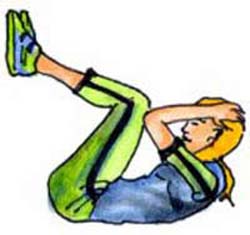 Yoga or Pilates … which one is better? They’re both different — and good — in their own right. Which one should you do?
Yoga or Pilates … which one is better? They’re both different — and good — in their own right. Which one should you do?
Well, that would be determined by your own personal physical goals. The simplest way to describe the difference is: it’s not physical, but rather philosophical. Yoga originated in the East, while Pilates originated in the West. Both serve to strengthen muscles, increase flexibility, improve coordination and build core strength.
Benefits of yoga
- It unifies the mind and body, providing an all-encompassing feeling of rejuvenation and quietude.
- It makes you aware of your body, its flexibility, posture and patterns of movement. That is, you learn to listen to your body more.
- It improves flexibility through a series of poses often done in a particular order, which is said to promote the flow of energy throughout the body.
- It teaches proper breathing techniques, which has far-reaching benefits beyond just the yoga class.
- Good breathing technique improves the flow of oxygen to muscles, helping them to recover faster from fatigue and injury brought on my intense exercise.
- Focusing on breathing in high stress situations can help you “get a grip” on yourself. Breathing techniques assist in alleviating the pain of labor for pregnant women — the uterus is after all simply a muscle that “contracts” causing the pain during labor. Focused breathing provides more oxygen, which helps relax the muscle.
- Easy to do while traveling — little to no gear is required since it uses your own body weight as resistance to strengthen the muscles.
- Provides functional strengthening and flexibility to multiple muscle groups that make it the perfect accompaniment to weight training and other forms of intense exercise.
- Different styles of yoga give you exactly what you’re looking for. Just to name a few:
- Iyengar Yoga — an excellent form of “beginner yoga,” typically done with props (straps, blocks, pillows etc.) to assist those who are less flexible. It’s ideal for rehabilitation from physical injury, toning muscles and developing focused calm. It is often called “Meditation in Action.”
- Bikram Yoga — done in classes where the temperature exceeds 100 degrees, it provides an intense workout that warms and stretches ligaments and muscles in the order in which they should be stretched.
- Ashtanga Yoga — also known as power yoga, it is light on the meditation and heavy on the workout. Ideal for building strength, flexibility and stamina.
- Hatha Yoga — the ideal type of yoga for the end of the day, as it focuses on breathing, meditation and going at your own pace.
- Raja Yoga — called Yoga of the mind. People who have or desire the ability to quiet their mind and find some balance in a usually hectic life lean toward this form of yoga.
Benefits of Pilates
- The six principles of Pilates are Centering, Control, Flow, Breath, Precision, and Concentration. These principles are the basis of Pilates and help train the body to move efficiently with minimal impact.
- Excellent for building core strength as it focuses on the abdomen, lower back and glutes or the ‘powerhouse’ as its called in Pilates.
- Exercises can be more easily tailored for sports specific training.
- Pilates also uses machines, which simulate the mechanics of human muscle tension, which work on stabilizing muscles groups so you never run the risk of overstretching.
- It provides a gentle yet highly effective workout, making it ideal for rehabilitation after physical injury.
- Pilates elongates and strengthens muscles improving joint mobility, flexibility and stability.
- No body part is left untrained, providing a complete body workout and the balance between strength and flexibility ensures symmetrical workout for the entire body.
- Unlike traditional exercises, Pilates’ workouts provide a long lean toned look. Dancers have been incorporating Pilates workouts since the early 1960’s, way before it became a mainstream form of exercise.
- Different types of Pilates include:
- Machine-based Pilates — is similar to traditional weight training, in that it uses spring loaded resistance machines to work the muscles. The difference is that the focus is not on repetitions or weight, rather on precision and form. Quality rather than Quantity.
- Mat Pilates — is similar to yoga in that the exercises are more dance-like and fluid, it emphasizes posture and breathing.
- Rehabilitation Pilates — is primarily for recovering from injury.
Which should you do? Give them both a fair shot, and you might find that you don’t want to choose one over the other … rather, in the interest of the 3 Cs (Change, Challenge, Confuse), you might want to do them both routinely!
